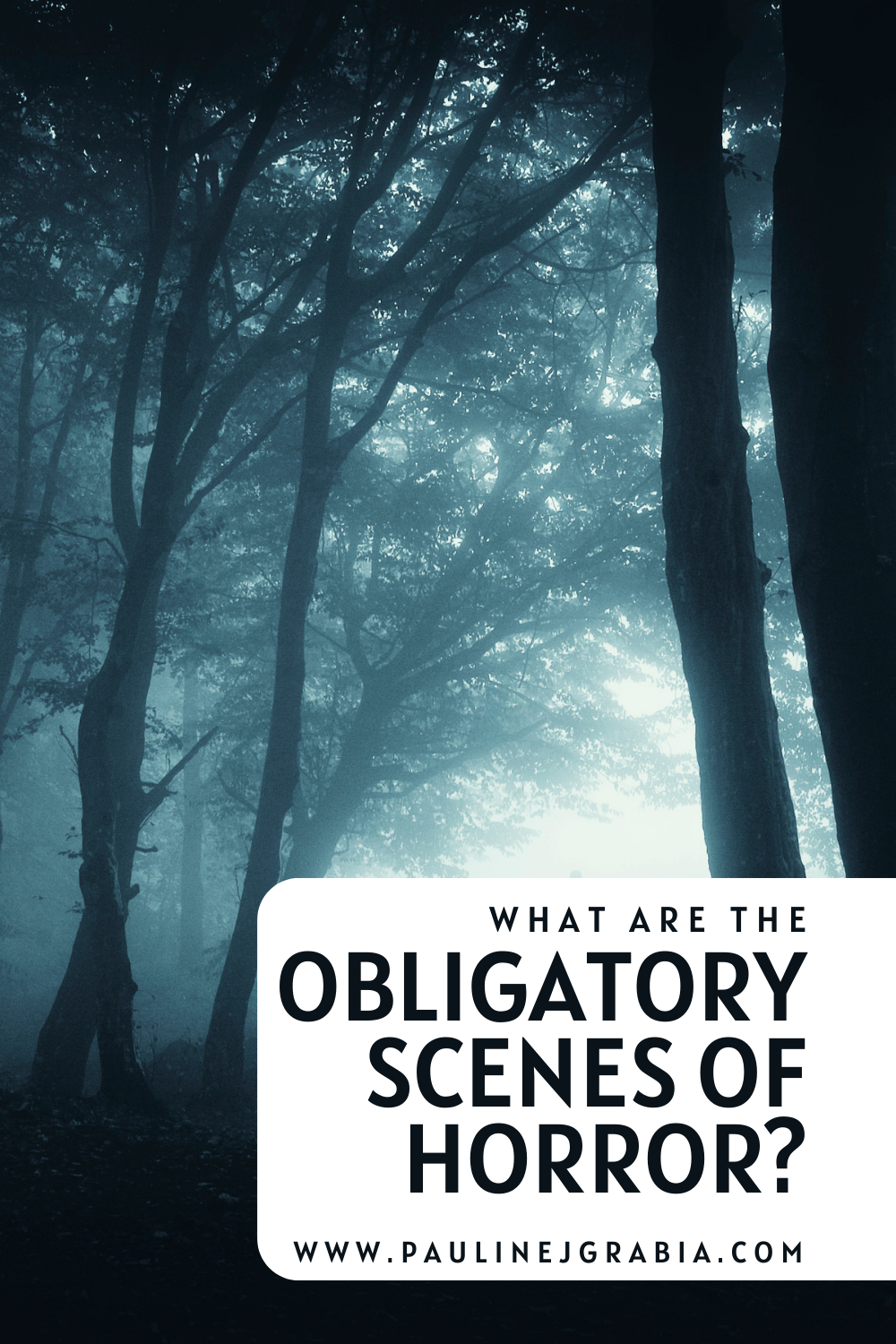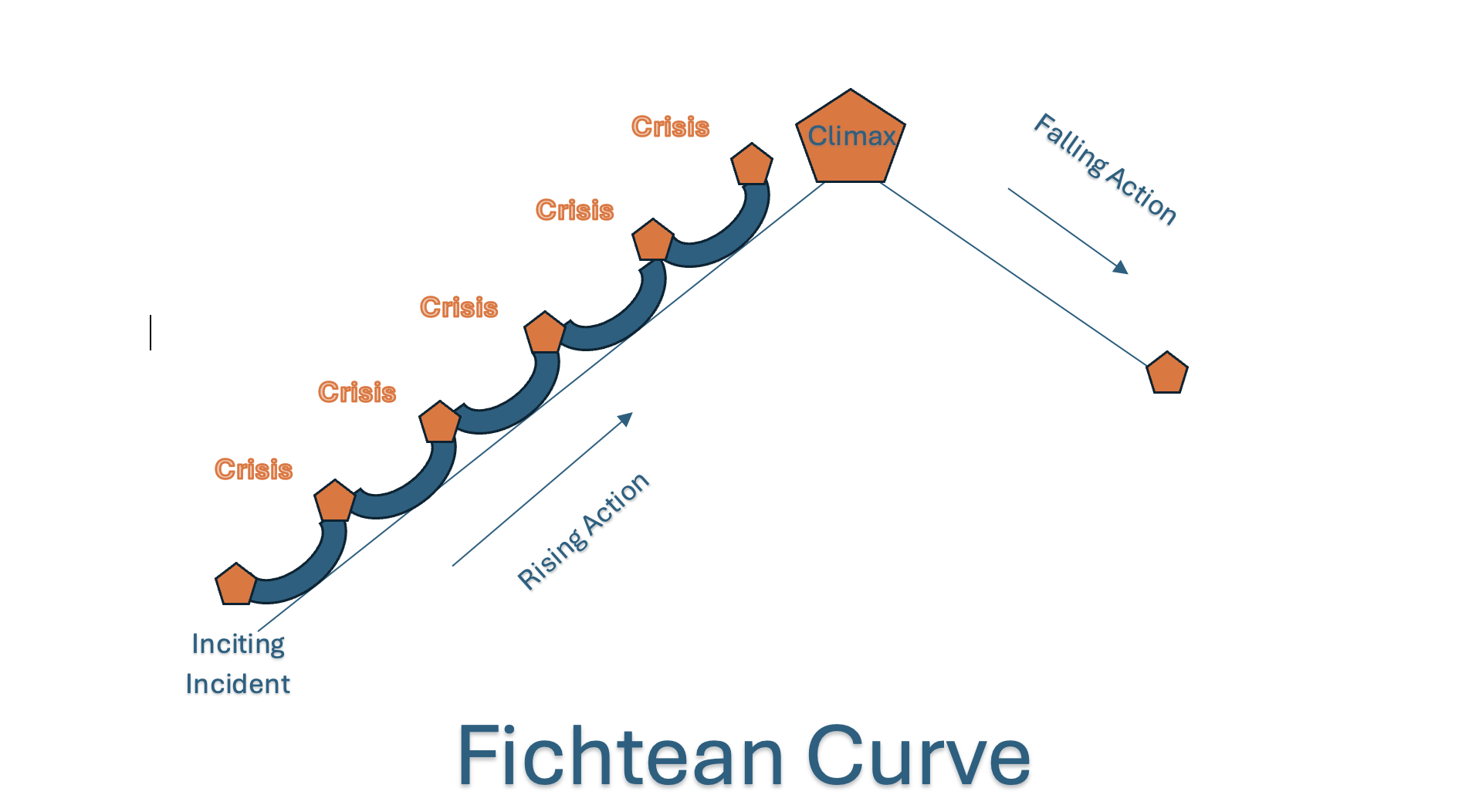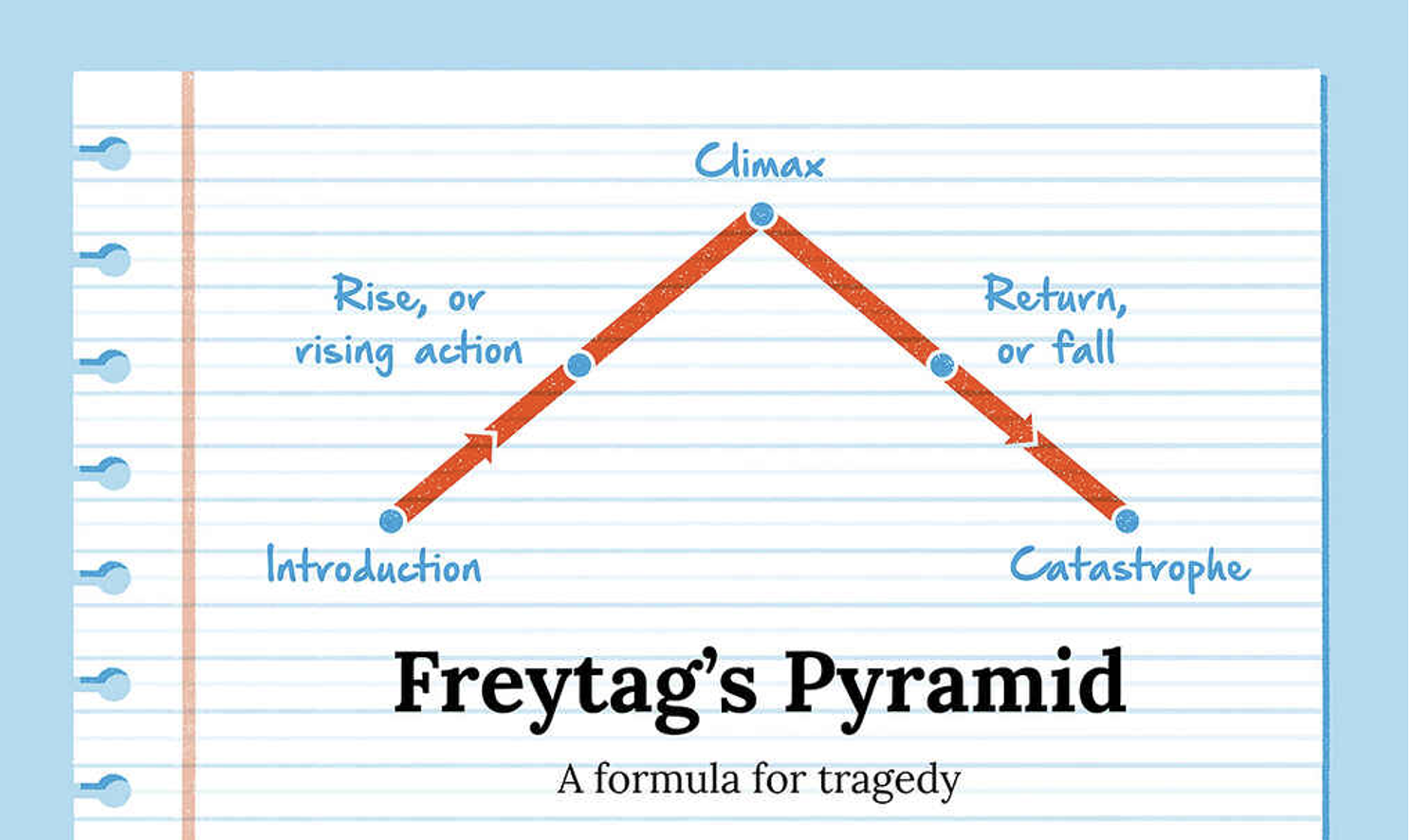The Obligatory Scenes of the Horror Genre
Pauline J. Grabia participates in the Amazon Services LLC Associates Program, an affiliate advertising program, and earns from qualifying purchases from links in this post.
Please subscribe to my email newsletter for updates on my website and blog, and exclusive access to exclusive material in the Subscriber Content page of this website (see menu bar above). New content will be added regularly. You can sign up in the form found in the footer of this page. Thank you!
Last week, in honor of Halloween, we examined the necessary conventions expected from horror stories, both in novel and screenplay (movie) format. These included a supernatural and evil monster/villain, the existence of a sin or mistake for which the monster is wreaking punishment, an eerie, claustrophobic setting, the presence of characters called shapeshifters, a speech made in praise of the monster/villain, a ticking time clock or deadline, and at least one false ending to the story. This week, we will look at the obligatory scenes of a horror story, once again using Alfred Hitchcock’s classic movie, Psycho, as our example for these scenes.
Obligatory scenes, like conventions, must be present for a story to adhere to a specific genre. In this case, the scenes we will explore must be present in a horror story for it to hold together and work. Without them, the plot falls flat, and the reader/viewer is disappointed. In the horror genre, six scenes must occur in one form or another for the story to work.
Spoiler Warning: I will be giving away important plot points to the movie Psycho.
1. The Monster/Villain Makes Their Attack Scene
In any horror story, be it a short story, novel, or screenplay, there must be a scene where the initial or first attack of the monster/villain throws the Protagonist's world off-kilter and requires the Protagonist to attack to preserve life, usually their own. Other attacks (usually murders) may have already occurred, but this attack is the one which is the Inciting Incident of the story, the moment the regular world of the Protagonist is rocked permanently off its foundations.
In Psycho, Norman Bates, acting as the “Mother” character, attacks and murders Marion Crane in the infamous shower scene. Law enforcement, the private investigator Arbogast, and Marion’s loved ones, Sam and Lila, search for Marion and the missing money.
2. The Protagonist Ignores the Warning Scene
In this scene, some sign or warning is revealed that would cause a logical, reasonable individual to pause and question what is going on and take caution. Still, in the horror story, this warning is often ignored or downplayed by the protagonist or the world. This commits the protagonist to the (horrifying) events to follow.
In Psycho, the sheriff and the surrounding community of the Bates Motel know about the “suicide” (murder) of Norman’s mother and her lover and the reclusive strangeness of Norman. Arbogast warns Sam and Lila that something is extraordinary about Norman and his mother. Still, Sam and Lila charge forward and go to the Bates Motel alone.
3. The Monster’s True Nature is Revealed Scene
In this scene, the stakes rise, and the imaginary countdown clock begins to countdown as the reader (and sometimes the story’s Protagonist) starts comprehending the nature of the Monster/Villain. If the Protagonist is to survive, they must go from a defensive position to an offensive one. They must strike blows back at the antagonistic force. Even so, survival is not guaranteed.
In Psycho, Norman reveals himself as people begin to nose around looking for Marion, and he gets increasingly squirrelly and defensive. The big reveal is at the end, when Norman, dressed as Mother, enters the cellar with a knife prepared to kill Lila and is stopped by Sam. However, we get glimpses of Mother’s evil from Norman’s description of her to Marion during their talk in the parlor just before Marion’s murder. The sheriff also reveals clues about Norman’s true nature when he talks about the death of Norman’s mother and her lover.
4. The Protagonist Becomes the Victim Scene
At some point in the story, there must be a scene where the Protagonist discovers or realizes information that leads them to confront the Monster/Villain, making them the last victim. Time is running out for the Protagonist to defeat the Monster/Villain and survive.
In Psycho, the private investigator, Arbogast, suspects that Marion Crane was at the Bates Hotel, and Norman and his mother know something about what happened to her. When Arbogast goes to the house to question Mrs. Bates, he is attacked and killed by Mother. Likewise, Sam and Lila go to the Bate’s home searching for Norman and his mother, suspecting they are behind Marion’s disappearance. By going there, they put themselves in danger of Mother, resulting in the scenes where Norman knocks out Sam and then, dressed as Mother, enters the cellar to attack and kill Lila.
5. The Protagonist at the Monster's Mercy Scene
This is the most crucial scene of the story, also known as the core event. It is the story's climax when the Protagonist becomes the last victim of the Monster/Villain and must either beat them and survive or lose and die. The Protagonist usually has a unique ability, talent, or gift, which they employ in this scene to battle the antagonistic force. One convention of this scene is that there is usually a false first ending, followed by the Monster/Villain rising for one last attack, followed by the final ending.
In Psycho, Sam and Lila sleuth their way to the Bates Motel, and Sam confronts Norman. They conflict, and it appears that Norman has overcome Sam, knocking him unconscious. Then Lila discovers the taxidermized corpse of Mrs. Bates in the cellar, Mother attacks, and Sam awakens and arrives in time to keep Norman/Mother from killing Lila and subdue him in the second ending.
6. The Protagonist’s Great Escape from the Monster/Villain Scene
When the story resolves, there must be a scene where the reader (viewer) knows whether the Protagonist survived the Monster/Villain. Was the Monster/Villain defeated (destroyed)? Commonly, there is a final moment or emotion left with the reader that indicates that evil hasn’t been ultimately defeated. It still lurks, waiting for the opportunity to attack again at some future time.
In Psycho, we have the final scene, after the psychiatrist explains Norman/Mother to the protagonists, where Norman sits alone in a room at the police station. His thoughts are expressed out loud, but they are in the voice of a woman—Mother—not Norman. She comments how she couldn’t “hurt a fly.” Still, the evil smile that crosses Norman’s face, which Hitchcock superimposes over Marion’s car being pulled out of the swamp, leaves the viewer with an eerie feeling that Mother is simply biding her time until Norman is freed—then she can continue her rampage or terror again.
Hitchcock weaves these six obligatory scenes of the horror genre into his movie Psycho, which is one reason why it’s a horror classic that has stood the test of time. All great horror stories contain these scenes.
What are your favorite horror stories (written or film)? Can you pick out the obligatory scenes and conventions of the horror genre in them? Are you an aspiring horror writer? I would love to hear all about it. Leave your comments below.
Please subscribe to my email newsletter. By subscribing, you will receive advance notice of upcoming blog posts, news updates about my website and publishing journey, and exclusive content available only to subscribers on my Subscriber Content page. This content currently includes the Prologue and Chapters Eleven through Twenty-Five of my novel Filling the Cracks, the first ten chapters available to the public on my blog. If you want to read the novel's conclusion, subscribe! You can begin with Chapter One here if you haven’t read Filling the Cracks.
Thanks again for reading! Check out my social media accounts and return for another informative post next week. God bless you richly!
Pauline J. Grabia





In previous posts, we have explored various forms of story structure, including Freytag’s Pyramid, the Fichtean Curve, and the Hero’s Journey. Each of these is an effective story structure for a writer, depending on the narrative. The Three-Act Story Structure is one of the most used story frameworks in literature and film. This structure divides the story into three main sections or acts: Act 1, the Setup (or Beginning); Act 2, the Confrontation (or Middle); and Act 3, the Resolution (or Ending). This will not be a comprehensive exploration of the three-act structure, as there are other blogs listed at the end that do a much better job than I could of deeply examining the elements of this structure.